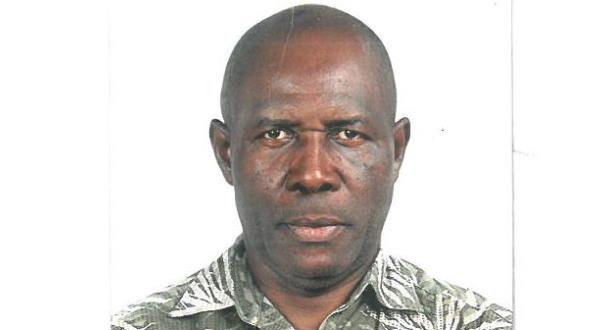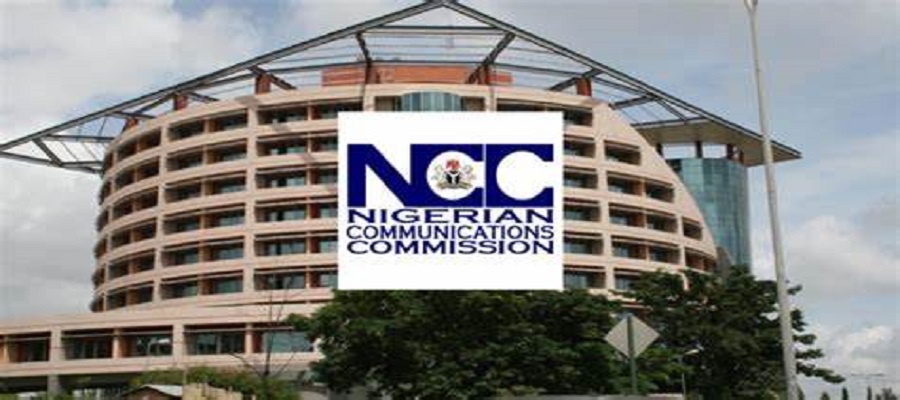Telecom
What Makes Satellite Communications an Essential Part of 5G Infrastructure

By Andrew Aroh
- 5G is a technology that will push the boundaries of throughput and capacity further beyond that of 4G to enable newer types of applications and services in the domains of: Health, Transport (Land, Air and Sea), Entertainment, M2M, Security, etc.

- 5G will lead to a huge shift towards a landscape dominated by wireless connectivity.
- 5G is accompanied with deployment of Architectures (Fiber +Terrestrials wireless + Satellite leveraging Network Functions Virtualization (NFV) and Software Defined Networking (SDN) both at the core and edge of the Network. They will provide: increased computing power, scalability, reduced operating costs and business models to enable differentiation
- 5G will enable instantaneous connectivity to billions of devices, the Internet-of-things (IoTs) and a truly connected world: smart cities, smart homes and smart schools, etc.
- The satellite transport conduit will be integrated into the overall available communication map
- Service providers will need to provide seamless connectivity between terrestrial and satellite
- Traffic will be dynamically steered to the best transport options available (terrestrial/Satellite according to bandwidth, latency, network conditions and other application-specific requirements)
- The interworking between terrestrial and satellite is now well recognized and promoted in the 3GPP standards.
- Management of the NFV infrastructure will be performed through a management and orchestrator (MANO) Framework
- This architecture allows easy integration of multiple applications
- A virtual evolved packet core (vEPC) application would extend local call switching possibility.
A Mobile (Multi access) edge computing (MEC) platform could host different application like caching and multicast which can help reduce latency and improve qualify of experience (QoE) for the user.
- Full integration within the virtualized architecture will apply to satellite as well, beginning with the network core and then expanding to the edge.
- Satellite optimized Quality of service (QoS) and Operational Expense (OPEX) advantage will also remain key as the landscape becomes even more competitive.
- New opportunities for extending satellites services in urban and rural areas will emerge for:
- Covering white zones and ensuring a seamless connectivity plan
- Emergency services
- Broadcast/multicast and network offload schemes
- Aero and Maritime mobility
- Connected cars (software download)
- Mobile backhaul
- Newer low Earth Orbit (LEO) and Medium Earth Orbit (MEO) constellations will further expand the reach of satellite communications
- Oneweb has launched its first batch of satellites that will provide internet access (using mobile/multiple access) Edge computing (MEC) platform to rural regions around the world.
- Oneweb plan is to build a large network of satellites that will be hung in low earth orbit and beam down broadband internet to underserved areas. The company planned to put up 650 satellites by 2020, with a plan to expand to 900 as it expands its coverage. The network will be built over the course of 21 launches to deploy the satellites
- Space-X is also building a global, broadband LEO constellation of satellites to provide broadband internet access, Interactive multimedia and high-quality voice, operating in the high Frequency ka-band of the radio spectrum.
- Boeing is set to create a new Non-Geosynchronous (NGSO) Satellite constellation for broadband services using V-band for low-latency, very high data rate broadband across the United Stats and the world.
Between rising commercial demand and government-driven universal broadband service obligations, the company expects satellite could play a major role.
- It really comes down to the insatiable demand for bandwidth that we are seeing in the market place. The amount of bits being required by all of us is growing on the order of 20 something percent a year, and in order to meet that demand there are certain areas where satellite has advantages over terrestrial approaches. Customers lack choice in the broadband provider options, especially in rural areas, meaning there is room for more satellite broadband players to compete.
- In the spectrum front, the constellation could downlink information in the 37.5 to 40.0 GHz band on a shared access basis with the proposed Upper Microwave Flexible Use (UMFU) Service.
THE HIGH FREQUENCIES OF THE EM SPECTRUM
| DESCRIPTION | FREQUENCY | WAVELENGTH |
| HF | 3-30MHz | 100-10m |
| VHF | 50-100MHz | 6-3m |
| UHF | 400-1000MHz | 75-30cm |
| Microwave | 3×109 – 1011Hz | 10cm-3mm |
| Millimeter waves | 1011-1012Hz | 3mm-0.3mm |
| Infra-red | 1012-6×1014Hz | 0.3m-0.5um |
| Light | 6×1014-8×1014Hz | 0.5um-0.4um |
| Ultraviolet | 8×1014-1017Hz | 0.4um-10-9m |
| X-Rays | 1017-1019Hz | 10-9m-10-13m |
| Gamman Rays | >1019Hz | >10-13m |
Increased spectrum for 5G will provide:
- Continuous connection
- Greater capacity
- More data
- More users
- Faster speeds
- Faster Response Time (Lower-Latency) for connections
- The increased spectrum in the mmW band will provide localized coverage as they only operate overshot distances
- Future 5G deployments may use mmW frequencies in bands up to 86GHz
- On the technology side, Boeing would want to taking its digital pay load technology from it GEO System and putting it into a Small Satellite Form Factor (SSFF). This is because there is a definite advantage in applying them to V-band NGSO System. The digital payload is SCALABLE and can be sized up or down as needed
- The new trend is to shorten development cycles of satellites and make sure the next generation capabilities are brought up quickly and not have these long development cycles that have been in the past. The process involves continuous miniaturization in order to fit more transistors on integrated circuits (ICs), or essentially bringing Moore’s law to bear in space. This could dovetail well with the companies LEO ambitions, as satellites in this orbit typically have shorter life span and therefore require less radiation hardening compared to 15-year geostationary satellites.
Features of SATCOM SOLUTIONS FOR 5G
- Cost Effective
- Plug and play
- Enabling Mobile Operators and Network Vendors to accelerate 5G deployment across all geographies and multiple use cases
- Creating new and growing market opportunities for SATCOM Industry Stakeholders
- Integrating Satellite Links with heavy emphasis on standardization to allow trusted operation and to Facilitate industry adoption
- Focus in on eMBB(enhanced Mobile Broadband) to fixed and Mobile Networks, including support for orchestration and slicing, with the satellite links providing backhaul connectivity either alone or in parallel (Multilink) connectivity with terrestrial links.
- Platform which enables high efficiency, high performance, Virtualization and Multiservice capability parameter for 5G.
- Consider the Successful Demonstration of 5G Connectivity over a LEO Satellite, Powered by Gilat using Telesats phase 1 LEO
- At EuCNC 2019, Sat5G conducted six demonstrations showcasing 5G use case over satellite: Video Streaming, Content Caching, Airline Connectivity, 5G NR over satellite, Backhaul applications-1, Backhaul applications-2
- In General, Testing campaign confirms LEO provides superior fiber-like performance for high end satellite services.
- The ability to demonstrate Fiber-Like performance via satellite across a number of applications that perform poorly on GEO satellite backhaul is a testament to the capabilities of LEO network for 5G.
- With its high-throughput links, ultra-low latency, and disruptive economics, LEO constellations offers an unparalleled value proposition to expand the reach of 4G and 5G networks.
Test Scenarios Included:
- High definition Video steaming without interruption
- Video conference with teams demonstrating consistent and voice transmission with user experience matching terrestrial and cellular connections
- Remote desktop connection to seamlessly manage a remote computer
- VPN connection without any delay or outages
- FTP encrypted file transfers of 2GB in both directions
- IPsec tuned encryption with no reduction in the performance of the link.
As satellite professionals plan, design and build offerings to provide best-in-class connectivity for 5G customers, we are eager to explore how cutting edge technologies like new LEO constellations can integrate with global connectivity infrastructure across every application to deliver an outstanding performance, with significant improvement over what we can achieve via GEO satellites today.
Therefore, to get super-high, multi-gigabit speeds, carriers are first turning to newer, much higher frequencies, known as millimeter-wave (mmW).
Andrew Aroh is President SSPI Nigeria
Telecom
NCC Bars Ex-Officials from Joining Telecom Firms for 5 Years

Nigerian Communications Commission (NCC) has introduced strict corporate governance rules that will bar its top officials from taking up roles in telecom companies they regulate until five years after leaving office.

Under the new Corporate Governance Guidelines for the Communications Industry, the Chairman, Executive Vice-Chairman, and Board Commissioners, both executive and non-executive, are barred from being appointed to any position in a licensed telecom company until five years after their exit from the Commission.
Similarly, Directors of Departments at the NCC face a three-year cooling-off period before they can take jobs with any licensee under the Commission’s supervision.
The move, announced on August 11, 2025, seeks to enhance transparency, accountability, and ethical standards in Nigeria’s fast-growing telecommunications industry.
Departmental directors face a three-year cooling-off period before joining any licensee under the agency’s oversight.
This policy aims to prevent conflicts of interest and ensure impartial regulation.
By creating a clear separation between regulators and the industry, the NCC hopes to curb undue influence and maintain public trust.
]The guidelines reflect a global trend in regulatory bodies enforcing cooling-off periods.
Similar measures exist in industries like finance and energy to safeguard against regulatory capture.
For Nigeria’s telecom sector, this is a significant step toward aligning with international best practices.
The NCC’s new framework also targets telecom operators’ internal governance.
Board chairmen or vice-chairmen are barred from holding executive powers or serving as MD/CEO of a licensee.
Former board chairmen and non-executive directors must wait five years before assuming executive roles in the same company or its affiliates.
Additionally, no more than two family members can serve on a licensee’s board simultaneously.
These measures aim to promote balanced board structures and reduce nepotism.
Dr Aminu Maida, executive vice-chairman, NCC, emphasised the importance of these reforms.
“Corporate governance is no longer a soft requirement. It is now a strategic imperative,” he said during the guidelines’ launch in Lagos.
Maida highlighted that robust governance correlates with better business performance, citing an NCC internal review. Companies with strong governance frameworks consistently outperform peers in service delivery, financial management, and regulatory compliance.
Nigeria’s telecom sector is a cornerstone of its digital economy. With over 222 million active mobile subscriptions as of Q1 2025, the industry supports critical sectors like finance, healthcare, and education.
However, challenges like cybersecurity threats, energy shocks, and rising consumer demands have exposed governance weaknesses. The NCC’s new rules aim to address these by fostering transparency, accountability, and innovation.
The guidelines apply to all communications companies holding individual licences and paying Annual Operating Levies (AOL) under the AOL Regulations 2022.
The NCC has indicated flexibility in applying the rules across different licence categories, with phased compliance measures to be communicated in writing. While the rules may cause short-term disruptions for operators, the NCC insists that long-term benefits, like improved service quality and market trust, will outweigh these challenges.
Telecom
Airtel, Vodacom sign Network Infrastructure Agreement to Drive Digital Inclusion

Airtel Africa and Vodacom Group have announced a strategic infrastructure sharing agreement in key markets including Mozambique, Tanzania and the Democratic Republic of Congo (DRC), subject to regulatory approvals in the various countries.

The agreement marks a transformative milestone in promoting digital inclusion and expanding access to reliable connectivity across Africa.
The initial partnership focuses on sharing fibre networks and tower infrastructure, to accelerate the roll-out of digital services in these markets, increasing connectivity for customers while reducing operators’ infrastructure costs and improving speed to market.
By leveraging existing infrastructure, the collaboration aims to deliver improved connectivity, faster internet speeds, and more reliable services. This will not only enhance customer experience but also assist with providing access to digital services for a broader population, particularly those in underserved areas, helping to bridge the digital divide in Africa.
Vodacom Group’s chief executive officer Shameel Joosub said: “Providing connectivity to empower people is at the core of our strategy. Our partnership with Airtel Africa is a proactive step forward in creating a sustainable, inclusive, and connected digital future for the continent.
Through infrastructure sharing, we can provide cost-effective services to more people, more rapidly, ensuring that no one is left behind in the digital age. As we fulfil our ambition to connect 260 million customers by 2030, the need for scalable and cost-efficient network solutions becomes increasingly significant.
This partnership provides us with the opportunity to narrow the digital divide, empowering more individuals and communities through digitalisation across the continent. It is aligned with our purpose to connect for a better future,” concludes Joosub.
Airtel Africa’s chief executive officer Sunil Taldar said: “This partnership is aligned with our unwavering commitment to delighting our customers by always making our network available to them even in the remotest locations.
“Working with Vodacom, we will open greater access to digital and financial opportunities which will transform the lives of our customers while complying with all regulatory requirements.
“Even as competitors, it has become a business imperative for us to collaborate in the provision of critical infrastructure required to build resilient network with strong capacity to support the emerging digital technologies as well as the growing need for data-enabled products and services.
“Accelerating the deployment of fibre connectivity is a key enabler in the acceleration of 4G and 5G technologies in Africa to deliver the high-speed, low-latency, and reliable connections needed for modern digital applications.
“This partnership allows for further opportunities for both operators to enhance network performance, extend coverage, and increase mobile, fixed, and financial services leveraging a broader footprint on the continent.”
Telecom
Truecaller Crosses 100m Users in MEA Region

Truecaller, a global caller ID and spam prevention platform, has reached 100 million active users in the Middle East and Africa (MEA) region, representing a 19% year-over-year increase.

According to the platform, the region’s main markets include Egypt, Nigeria, South Africa, Kenya, Algeria, Ghana, and Jordan.
Truecaller is routinely utilised on 20% to 45% of connected cellphones in these areas, including Android and iOS devices, according to the business.
The app has gained traction across the African continent with its concept of resolving communication issues for individuals and businesses by blocking unsolicited calls.
It has also collaborated with local businesses, forming major partnerships including a recent cooperation with Telecom Egypt to change consumer communication and experience by providing safe, customised, and seamless calling experiences.
Truecaller’s CEO, Rishit Jhunjhunwala, stated that the service has grown organically in markets such as MEA and India due to the mobile first environment, which uses a user’s mobile number as the primary identifier of calls. He under-lined that the MEA market provides a growth-enabling environment.
“We’re continuing to strengthen our organisation and our partnerships in the region, because we believe that the MEA is poised for significant growth for many years ahead,” said Jhunjhunwala.

 News3 days ago
News3 days agoGoogle Hit by AI-driven Cyber Attack

 General News3 days ago
General News3 days agoKuwait Busts Nigerian Cybercrime Ring Targeting Telecom Tower, Banks

 News3 days ago
News3 days agoFIRS Rolls out e-invoicing System for Large Corporate Taxpayers

 E-Business3 days ago
E-Business3 days agoPalmPay Partners AXA Mansard Health to Make Digital Insurance Accessible, Affordable

 Telecom3 days ago
Telecom3 days agoMTN Nigeria’s Mega Billion Promo Turns Airtime into Fortune for Thousands Amid Economic Strain

 E-Financial2 days ago
E-Financial2 days agoNBS Reports ₦6.72 Trillion VAT Haul as Tax Reforms Pay Off

 Telecom2 days ago
Telecom2 days agoMTN Nigeria Rolls Out Network-as-a-Service and Signs First MVNO to Drive Industry Efficiency

 E-Business3 days ago
E-Business3 days agoZequence Digital Boss Calls for Strong IP Laws Enforcement, to Protect Nigeria’s Software Sector

























